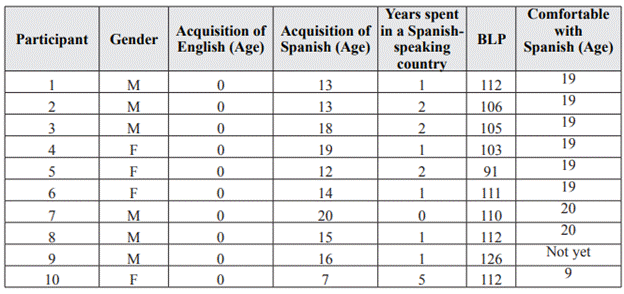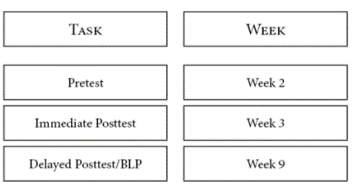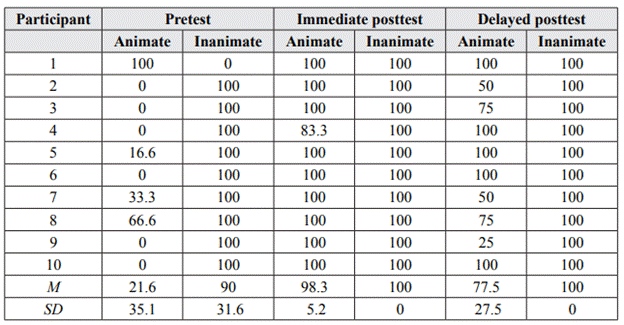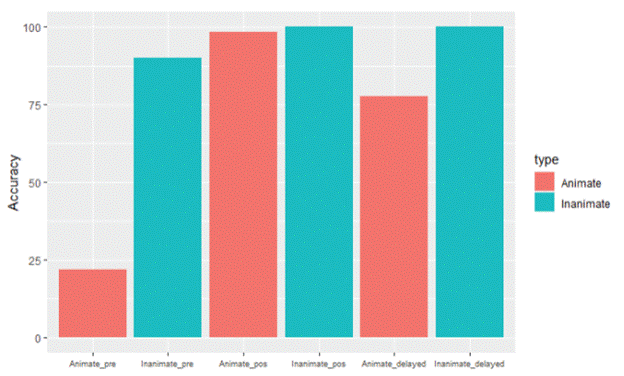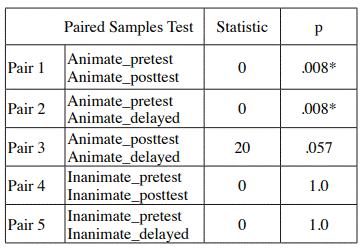Introduction
Translation as an activity for learning a second language (L2) dates back centuries (Carreres & Noriega-Sanchez, 2021; García Benito, 2019; Källkvist, 2004; Lerma Sanchís, 2020). Nevertheless, translation disappeared (at least theoretically) from language classrooms owing to its connection to the grammar-translation method (Carreres et al. 2018; Gasca Jiménez, 2017), a method in which the target language is exclusively taught through explicit instruction and in the students' native language (L1). Later, the direct method gained popularity. This method emphasized the use of oral communication and had no place for students' L1 (Benati, 2020); further, the use of translation was frequently stigmatized or even forbidden.
However, in recent years, language educators have witnessed a revived interest in translation not only at the professional level but also in the classroom (Carreres & Noriega Sánchez, 2021; García Benito, 2019; Pintado Gutiérrez, 2020). The connection between pedagogical translation and the grammar-translation method seems to have been severed. Nevertheless, only few studies have investigated the use of translation in the classroom (Cook, 2010) and, in particular, to improve students' morphosyntactic accuracy in the target language (Gasca Jiménez, 2017). To bridge this research gap, this study investigates the effects of pedagogical translation on learning the personal a (see sentence 1) in Spanish, where the preposition "a" is required when the direct object is animate and specific. This personal a, also known as differential object marker (DOM), in Spanish is a linguistic property that is particularly difficult to learn for English-speaking learners of Spanish, as shown by previous studies (Montrul, 2004; Montrul & Sanchez Walker, 2013).
Veo a los estudiantes en la universidad. I see DOM the students at the university. "I see the students at the university
This paper is structured as follows. Section 2 examines previous research on pedagogical translation and describes the linguistic property under study. Section 3 presents the research questions and the methodology employed. Section 4 reports the results of the tasks and their statistical analysis performed in this study. Finally, Section 5 discusses the results and concludes the study as well as presents its limitations and scope for future studies.
Literature review the differential object marker in Spanish
The DOM (Bossong, 1991) is a linguistic property instantiated in a diverse group of languages such as Spanish, Hindi, and Romanian (Bossong, 1985). The DOM refers to the overt case marking of a direct object. Whether a direct object is marked depends on several factors; for example, Aissen (2003) proposed two scales to explain DOM usage based on the lexical semantic properties of animacy and definiteness:
Animacy hierarchy: Human > Animate > Inanimate.
Definiteness hierarchy: Personal pronoun > Proper noun > Definite NP > Indefinite NP > Non-Specific NP
The scales proposed by Aissen (2003) are applicable to Spanish (Hur, 2020), as a direct object that is both animate and specific is marked with the preposition "a" (Example 2a). However, the direct object is not marked when the direct object is neither animate nor specific (nor both) (Examples 2b, 2c, and 2d, respectively). The personal a is marked in bold in Example 2a.
Manuela visitó a la mujer. Manuela visited DOM the woman. "Manuela visited the woman." La mujer: (+ animate + specific).
Manuela visitó la galería. "Manuela visited the gallery." La galería: (− animate + specific).
Manuela visitó una mujer "Manuela visited a woman." Una mujer: (+ animate - specific).
Manuela visitó una galería. "Manuela visited a gallery." Una galería: (- animate - specific)
The acquisition of DOM takes place at an early age for native speakers of Spanish (Rodríguez-Mondoñedo, 2008) but is late and difficult in both second and heritage language contexts (Guijarro Fuentes & Marinis, 2009; Montrul, 2011; Montrul & Bowles, 2009), even among those who have resided in a Spanish-speaking country for an extended period of time and who show a solid command of Spanish (Nediger et al., 2016). Owing to the complexity of learning the DOM in Spanish for non-native speakers of Spanish, it may be beneficial to explore approaches to teaching the DOM in academic contexts. Among the different existing teaching approaches, pedagogical translation stands as a potential candidate.
2.2 Pedagogical Translation
Several scholars have highlighted the role of translation in the field of second language acquisition (e.g., Leonardi, 2010; Gasca Jiménez, 2017). Specifically, the use of translation by students in the classroom is "a means to help acquire, develop, and further strengthen their knowledge and competence in a foreign language" (Leonardi, 2010, p. 17).
Despite doubts about its effectiveness, translation has made its way back into the language classroom: this fact is difficult to ignore (Carreres & Noriega-Sánchez, 2021). In the past, the strong association between translation and the grammar-translation method-involving teaching strategies that lack interpersonal communication as well as speaking and listening practice-caused pedagogues to hesitate to include any form of translation in their curricula. However, several scholars have pointed out that this association between translation and the grammar-translation method has weakened in recent years (Cook, 2010; Källvist, 2008). This paradigm shift from the outright rejection to the reintroduction of translation into the language classroom may partly be attributable to the proposals of the Common European Framework of Reference (CEFR) (Carreres & Noriega-Sánchez, 2021). Although the 2001 edition of the CEFR did not provide detailed descriptors of mediation activities (that include translation), the 2018 edition incorporated such activities and now offers valuable guidance for educators who wish to integrate translation activities in the curricula. This acceptance of translation activities has prompted several scholars to look into the benefits of its use (García Benito, 2019); recently, Carreres and Noriega-Sánchez (2021) listed the following possible benefits of incorporating translation in language learning:
Develop their plurilingual and multilingual competences;
Enhance their contrastive awareness of both the source and target language;
Engage with a variety of media;
Develop awareness of genre and text type;
Sharpen their understanding of grammar;
Broaden their lexical knowledge;
Develop stylistic awareness;
Develop dictionary and documentation skills;
Acquire know-how in the use of translation technologies;
Enhance creativity, critical thinking, and problem solving; and
Gain autonomy as learners
Relevant to this study, several authors have pointed out the use of translation in the classroom for improving morphosyntactic accuracy (Cook, 2010; Gasca Jiménez, 2017; Guerrero García, 2020; Källvist, 2004; Barbasán Ortuño et al., 2018; Snell-Hornby, 1985); however, as Gasca Jiménez (2017) noted, only few studies have explored this topic. For example, Gasca Jiménez (2017) examined the effect of pedagogical translation on morphosyntactic accuracy through a 4-week study with six learners of Spanish during a study abroad program in Spain. In this study, two translations from English into Spanish served as pretest and posttest at the beginning and at the end of the program, respectively. Results revealed a decrease in morphosyntactic errors (e.g., agreement between noun and adjective) for the two translations in only four weeks, which validates the use of pedagogical translation for this purpose. This work is in line with previous studies that call for the introduction of pedagogical translation activities (Cook, 2010; González Davies, 2002).
Similar results were found by Barbasán Ortuño et al. (2018), who investigated the use of pedagogical translation for learning grammar and vocabulary in language courses designed for specific purposes. Two groups of university students enrolled at a Spanish institution participated in this study: 60 Spanish-speaking students learning English as L2 and 25 English-speaking students studying Spanish as L2. The students took a written test at the beginning of the course and another test that included a translation exercise at the end of the course. In addition, pedagogical translation exercises were incorporated into each of the course units. The results demonstrated improvements in the mastery of the grammatical properties studied in both groups. This study aligns with previous studies that consider the benefits of pedagogical translation in the language classroom (Calis & Dikilitas, 2012; Fernandez-Guerra, 2014).
However, arguments against using translation in the language classroom also exist (Gatenby, 1967; Lado, 1964). For example, Gasca Jiménez (2017) stated two classic arguments against the use of translation by referencing the works of Lado (1964) and Gatenby (1967). The former considered that incorporating translation activities promotes the use of literal translation. The latter believed that translation is an artificial process that should be avoided in language teaching. Finally, García Medall (2001) compiled the following unfavorable arguments that have been associated with the use of translation:
Translation is an activity that involves only two skills-reading and writing.
Translation is not a communicative activity because it lacks oral interaction.
Translation is inadequate as a classroom exercise, as students should be expected to write their texts by themselves.
Translation has been practiced in a non-systematic, eventual, and unplanned way.
Translation is associated with literary and scientific texts, which do not fit the communicative needs of the students (Viqueira, 1992:76
Before concluding this section, it is essential to highlight the difference between pedagogical and professional translation (Lo, 2021; Pintado Gutiérrez, 2012). In this article, pedagogical translation refers to the use of translation in language teaching (translation activities are employed to learn a language), and the aim is not to teach the skills required by translators via translation theory or Computer Assisted Translation tools. However, note that some researchers have suggested collaboration between pedagogical and professional translation to explore common ground (Carreres & Noriega, 2012; De Arriba García, 1996; Pérez de Obanos Romero, 2018), and this represents an area of inquiry that deserves further attention.
In short, despite the reintroduction of translation, few studies have evaluated its effectiveness in the language classroom. The present study attempts to fill this research gap by assessing the effects of pedagogical translation on learning the personal a in Spanish by advanced English-speaking learners of Spanish.
Methodology
The present quantitative study used a pretest, immediate posttest, and delayed posttest design to examine the learning of the "personal a" in Spanish by incorporating pedagogical translation activities (in this case, written translations from English into Spanish) into an L2 classroom during nine weeks of a regular semester. The field of pedagogical translation lacks quantitative studies (Gasca Jimenez, 2017) that can assess the relationship between pedagogical translation and morphosyntactic accuracy and that can be used for future comparisons with other studies.
Research questions
Building on previous research, this study sought to answer the following research question: Will second language learners benefit from the incorporation of pedagogical translation activities in learning the personal a in Spanish?
3.2 Participants
Fourteen students participated in this study and were recruited from a university-level third-year Spanish class. The class met only once a week for three hours (with a 20-min break). The students enrolled in the course were atypical students, as this course is specifically designed for students who are native speakers of Spanish or who serve religious missions in a Spanish-speaking community abroad or within the US. In other words, this course is not intended for students who have reached a thirdyear class level by taking classes at the lower level.
The participants' linguistic level, especially their oral competency, was advanced, as they learned Spanish mainly through an immersion process. Of the fourteen participants, four were excluded: three because they did not participate in all sessions and one because she was a native speaker of Spanish who grew up in Spain and did not start learning English until she was 11. The participants' mean age was 22.1 (SD = 3.21). To provide a more complete picture of their bilingualism, the participants also completed the Bilingual Language Profile (BLP) (Birdsong et al., 2012). The BLP collects data regarding biographical information, language history, language use, and language proficiency. The questionnaire comprises 19 questions to be answered using a Likert scale, and it provides a numerical score of language dominance. The results of the questionnaire fall in the range (−218, +218), where zero indicates balanced bilingualism. Positive scores indicate that the participant is dominant in English, and negative scores indicate that the participant is dominant in Spanish. Table 1 summarizes the results from the BLP and shows that all participants have resided in a Spanish-speaking country except participant 7. In addition, all participants were comfortable using Spanish at the time of testing except participant 9. Regarding the overall BLP results, all participants were dominant in English, with the group mean being 105.6 points (SD = 12.28).
Instruments: pedagogical translation activities
As classroom activities, the participants completed three tasks that served as a pretest, an immediate posttest, and a delayed posttest. These activities were completed in weeks 2, 3, and 9 of the course. In addition, the participants completed the BLP in week 9. Figure 1 lists the tasks included in this study.
In week 2, the participants performed an in-class exercise (pretest): they translated 12 sentences from English to Spanish. The sentences contained past tense verbs in English to elicit the use of the preterit or imperfect tense forms in Spanish. Because the exercise was timelimited, it only included twelve sentences, six of which had inanimate and definite direct objects, such as in the sentence "The dog bit the bone it found," (mordió el hueso) and the other six had animate and definite direct objects that require the use of the personal a, such as in the sentence "The dog bit the boy yesterday while he was playing." (mordió al chico) The personal a was not mentioned in class, and the participants were not alerted to pay attention to the direct objects. The activity was performed at the end of the class, after practicing past tense verbs both individually and in groups via written and oral activities. At the end of the activity, the participants left the classroom and did not receive any feedback on the activity from the instructor during that week.
In week 3, the class focused on the direct object in Spanish, and the personal a was explained using English > Spanish translation exercises. At the end of the lecture, the participants were given an assignment (immediate posttest) containing precisely the same sentences as those in the activity in week 2. Similar to the previous week, the participants practiced direct object pronouns via oral and written exercises in pairs and in groups; however, only pedagogical translation exercises were employed to practice and explain the personal a in Spanish. From week 4 to week 8, pedagogical translation was used to teach other course content, such as passive sentences, gerunds and infinitives, the future, the conditional, and the subjunctive every week. The text for translation ranged from sentences to short paragraphs. The instructor did not ask the participants to complete translation exercises outside the classroom as homework. Moreover, the exercises were rarely performed individually; the participants generally translated in pairs or groups, compared their translations, and discussed possible solutions. In class, the possibility of having more than one correct translation in terms of word choice or syntax was emphasized. For example, discussions about language variation were common, as most of the participants have lived and learned Spanish in different countries and were aware of subtle linguistic differences.
In week 9, a translation exercise that included sentences covering the personal a (delayed posttest) was performed. To prevent the participants from recognizing the exercise, new personal a sentences were mixed together with other structures covered in the course (e.g., passive and subjunctive). The exercise comprised 20 sentences, of which 10 dealt with the personal a. During the exercise, the personal a was not referred to. Again, this exercise was completed at the end of class, and after this activity, the participants left the classroom.
Results
Before reporting on the statistical analysis, the descriptive statistics of the pretest, immediate posttest, and delayed posttest are presented. Table 2 shows both the average and the individual results for the accuracy of using the personal a in Spanish. Figure 2 displays the group average of each exercise. Sentences with animate and inanimate direct objects are shown separately. As mentioned above, all direct objects were definite; however, some direct objects were +animate and others were −animate. Pretest results showed that the participants, despite being exposed to the Spanish language in an immersion context and having advanced oral skills, did not use the personal a in obligatory contexts: their mean accuracy for animate direct objects was 21.6% (SD = 35.1%). Six of the ten participants did not use the preposition "a" on any occasion. In addition, only one participant (participant 1) correctly used the personal a in all sentences; however, this participant used the personal a in all contexts regardless of the type of object (animate or inanimate), so their score on sentences including inanimate direct objects was zero.
The immediate posttest results showed a notable increase in accuracy (M = 98.3%, SD = 5.2). All participants achieved 100% accuracy except for one student who made one error in using the personal a. In the delayed posttest, the accuracy was higher than that in the pretest (M = 77.5%, SD = 27.5); the increase in accuracy from the pretest to the delayed posttest was 55.9%. Half of the participants did not make any error in the use of the personal a, and nine participants answered at least half of the items correctly. Moreover, although the participant whose L1 was Spanish was excluded from the analysis, note that she achieved 100% accuracy in the use of the personal a on the pretest, immediate posttest, and delayed posttest. These results may serve as evidence that the tests were adequate for eliciting the use of the personal a.
To address the research question, Wilcoxon tests were used and the accuracies of the results of the pretest, posttest, and delayed posttest were compared. A significant difference in the accuracies of the results for sentences including animate direct objects was observed between the pretest (M = 21.6, SD = 35.1) and the immediate posttest (M = 98.3, SD = 5.2); W = 0, p = .008. A significant difference in the accuracies of the results for sentences including animate direct objects was also observed between the pretest (M = 21.6, SD = 35.1) and the delayed posttest (M = 77.5, SD = 27.5); W = 0, p = .008. Table 3 presents the statistical analysis; the statistically significant differences are marked with an asterisk (*). Table 3 does not show the contrast between the results of the posttest and the delayed posttest for sentences with inanimate direct object because the results are identical.
Taken together, these results suggest that pedagogical translation had a beneficial effect on the learning of the personal a in Spanish, as evidenced by the significant improvement in the accuracy of using the personal a in both the immediate posttest and the delayed posttest.
Discussion and conclusion
This study aimed to evaluate the effects of pedagogical translation on learning the personal a among advanced anglophone learners of Spanish. In particular, the objective was to determine whether students' understanding of the personal a in Spanish is improved by the incorporation of pedagogical translation activities (English > Spanish) in the classroom. The average accuracy of using the personal a increased by 76.7%, from 21.6% to 98.3%, between the pretest and the immediate posttest, which is statistically significant. Furthermore, the difference between the accuracy of the results for the pretest and delayed posttest was 55.9%, which is also statistically significant. These results suggest that incorporating translation as a pedagogical technique was beneficial for the participants in learning the personal a in Spanish, a linguistic property that the participants did not master despite being advanced students of Spanish who learned the language in an immersion context. Note that one participant (participant 9) did not show considerable improvement between the pretest and the delayed posttest. This student indicated in the BLP that he was not yet comfortable with Spanish. Thus, the benefits of pedagogical translation may be correlated with the competence of the interlocutor and/or the confidence in the interlocutor's use of Spanish. This is a question worthy of future research.
The present study aligns with previous studies that highlight the benefits of pedagogical translation in the language classroom to improve morphosyntactic accuracy (Cook, 2010; Gasca Jiménez, 2017, González Davies, 2002; Barbasán Ortuño et al., 2018). Alternatively, this study contradicts the arguments compiled by García Medall (2001) and other researchers who consider translation a harmful activity in the classroom (Gatenby, 1967; Lado, 1964).
The results of this study unreservedly encourage the reincorporation of translation in language classrooms along with other activities designed to develop oral and written language skills. Just as it is difficult to imagine a language course that contains only reading or oral activities, the act of incorporating translation in the classroom does not mean that we should return to the grammartranslation method by including vocabulary lists with sentences to translate and conducting language instruction exclusively in the native language of the students. Therefore, future research should explore the possible ways of successfully incorporating translation activities both in the L2 classroom, as in the case of this study, and in specific classes for heritage languages.
Finally, this study is not without its limitations. Although the Spanish class considered in this study usually has more than 20 students, enrollments have dropped considerably because of the COVID-19 pandemic. This fact, combined with common absenteeism, resulted in only 10 participants completing all the required activities. Future studies would benefit from the inclusion of a larger number of participants and participants from different learning contexts. Finally, the present study would have also benefited from the use of a control group.














